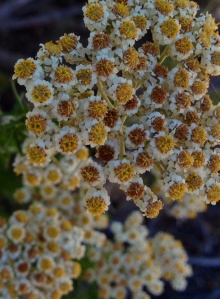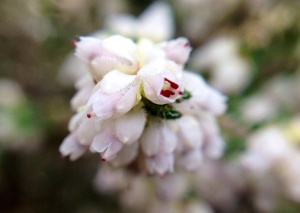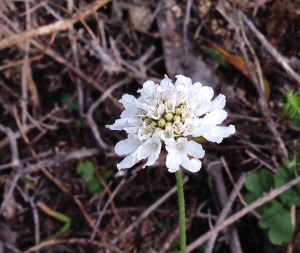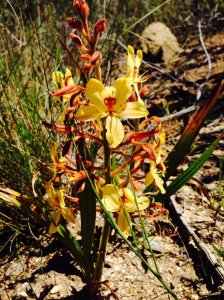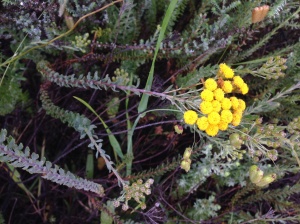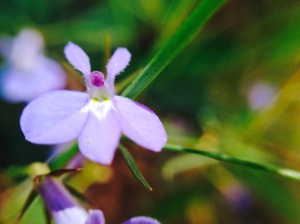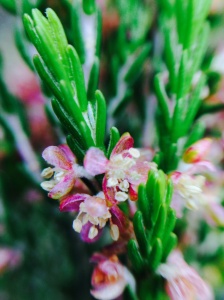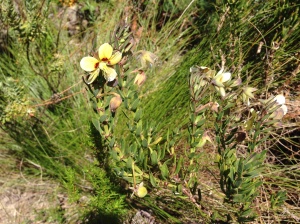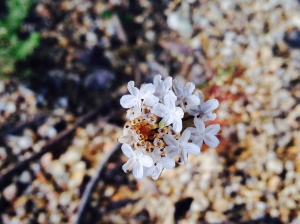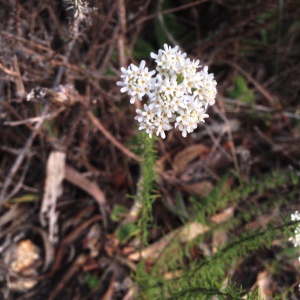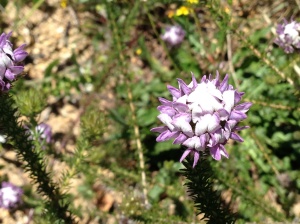A wet wet weekend
What better occupation on a rainy weekend than to go through all the flowers and spend some time researching those we haven’t yet identified. It’s been pouring with rain since yesterday morning, proper African rain causing floods and mayhem all over the province. Minor mayhem here on the farm as Peter and I spent an hour trying to clear the weir, him in the river working on a valve that was stuck and me and the dogs providing moral support. I can report that the new waterproofing that I applied to my raincoat works perfectly. The dogs loved it, running in the rain, offering advice and admiration to Peter as dug and cleared the pipes and valves.
So it’s a good evening to catch up with some flowers that I haven’t identified or posted.
Like this Common Button Daisy or Cotula turbinata. It’s regarded as a weed in some places, but not on our mountain where it’s welcome to take all the space it needs.
As is this spreading Erica. I have no idea which Erica it is, it rambles along the ground and can really take over in areas it likes.
Close up the little white flowers with their serrated edges are amazing.
Somehow I don’t think I’ve posted this Scabious columbaria yet. They are very common all over the mountain and they make great garden flowers.
This Common Butterfly Lily has the rather grand Latin name of Wachendorfia paniculata. It’s quite common and pops up in all sorts of places.
I always find blue flowers particularly attractive. So I was delighted to see these bright Purple Powerpuffs or Pseudoselago serrata close to the river.
I’m not sure I’ve correctly identified this. I think it is a Relhania as the leaves generally fit the description but this is not the subspecies that is photographed in my book.
This lovely blue flower is only about 10mm in size and it is another common, delicate flower found all over the farm. It is Lobelia pubescens.
I posted this shrub in the last blog, promising to identify it in the next one. It is Passerina corymbosa. It grows on disturbed ground, such as roadsides right acoss the Western and Eastern Cape. A little scruffy in appearance, and with flowers that can be either red or white. They are exquisite when photographed in close up.
This is a Roepera though I’m not quite sure which one as it most resembles Roepera flexuosa which is costal. Either its lost, or its a subspecies not included in my books. No doubt about the species though, the curled back yellow petals with red-brown splashes at the base and the oval leaves are all quite distinctive.
These lovely little flowering bulbs are called Ornithogalum dubium and they have suddenly emerged on the road that leads to the waterfall. It’s particularly satisfying when we find new colonies of lovely flowers in areas where we have cleared alien vegetation, as is the case here.
This however I can’t identify – it is tiny fragile and shortliived.
This is another flower I can’t identify, though I’m pretty sure it’s a Selago of which there are over 100 subspecies and they do grow at the top of stems covered in spiky leaves, sometimes with very pretty flowers, as here.
Finally I’ve posted this a couple of times, unidentified. But now I suspect it is Aspalathus cephalotes, or possibly Aspalathus nigra. More likely the former as we see them in pink as well as blue.

